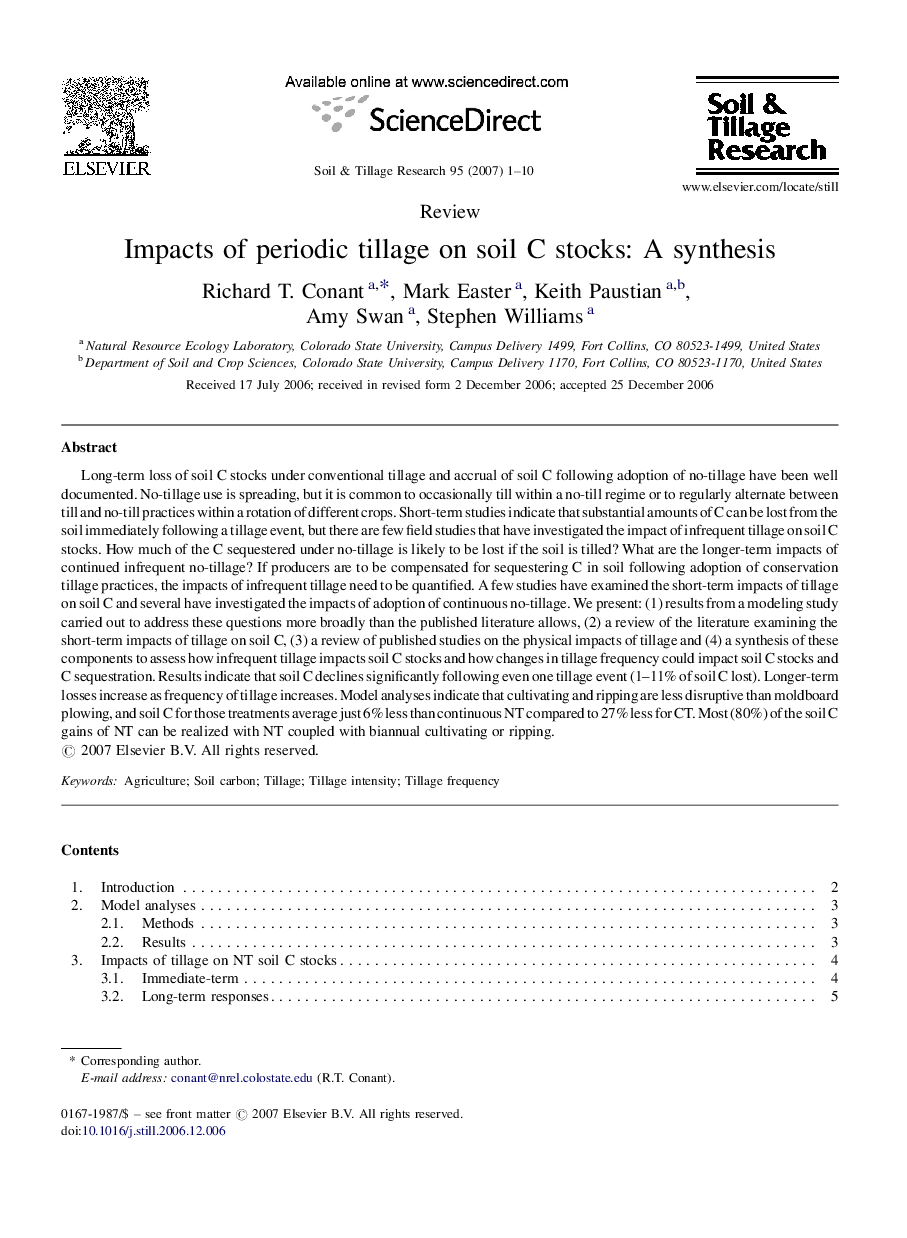| Article ID | Journal | Published Year | Pages | File Type |
|---|---|---|---|---|
| 306673 | Soil and Tillage Research | 2007 | 10 Pages |
Long-term loss of soil C stocks under conventional tillage and accrual of soil C following adoption of no-tillage have been well documented. No-tillage use is spreading, but it is common to occasionally till within a no-till regime or to regularly alternate between till and no-till practices within a rotation of different crops. Short-term studies indicate that substantial amounts of C can be lost from the soil immediately following a tillage event, but there are few field studies that have investigated the impact of infrequent tillage on soil C stocks. How much of the C sequestered under no-tillage is likely to be lost if the soil is tilled? What are the longer-term impacts of continued infrequent no-tillage? If producers are to be compensated for sequestering C in soil following adoption of conservation tillage practices, the impacts of infrequent tillage need to be quantified. A few studies have examined the short-term impacts of tillage on soil C and several have investigated the impacts of adoption of continuous no-tillage. We present: (1) results from a modeling study carried out to address these questions more broadly than the published literature allows, (2) a review of the literature examining the short-term impacts of tillage on soil C, (3) a review of published studies on the physical impacts of tillage and (4) a synthesis of these components to assess how infrequent tillage impacts soil C stocks and how changes in tillage frequency could impact soil C stocks and C sequestration. Results indicate that soil C declines significantly following even one tillage event (1–11% of soil C lost). Longer-term losses increase as frequency of tillage increases. Model analyses indicate that cultivating and ripping are less disruptive than moldboard plowing, and soil C for those treatments average just 6% less than continuous NT compared to 27% less for CT. Most (80%) of the soil C gains of NT can be realized with NT coupled with biannual cultivating or ripping.
